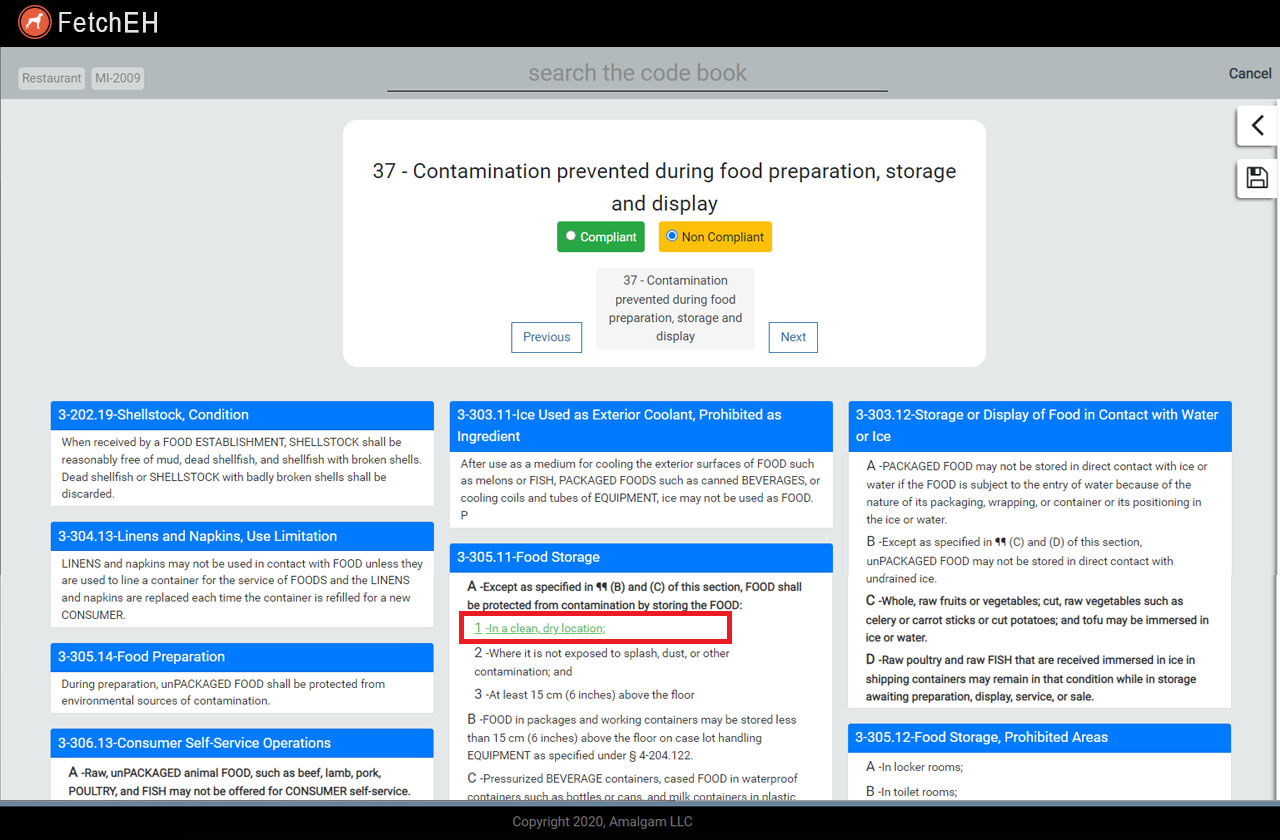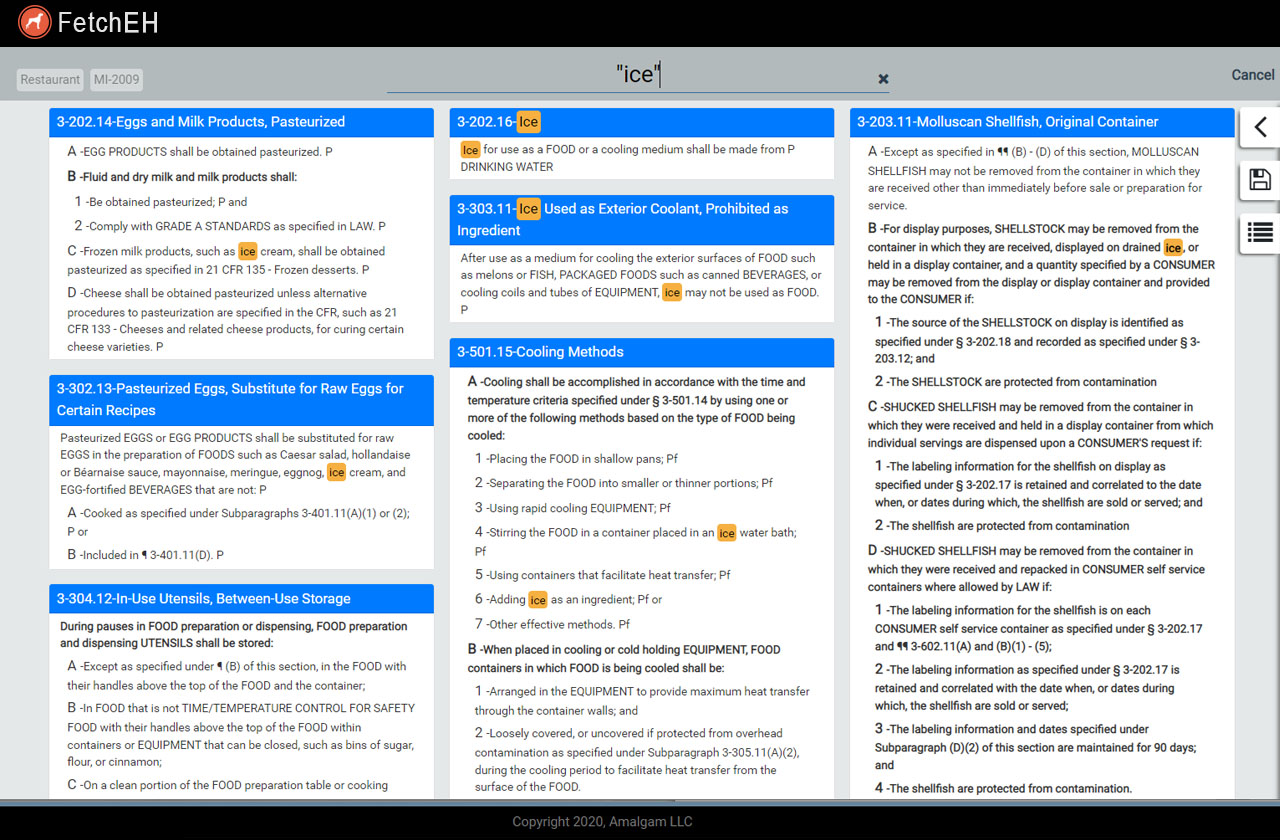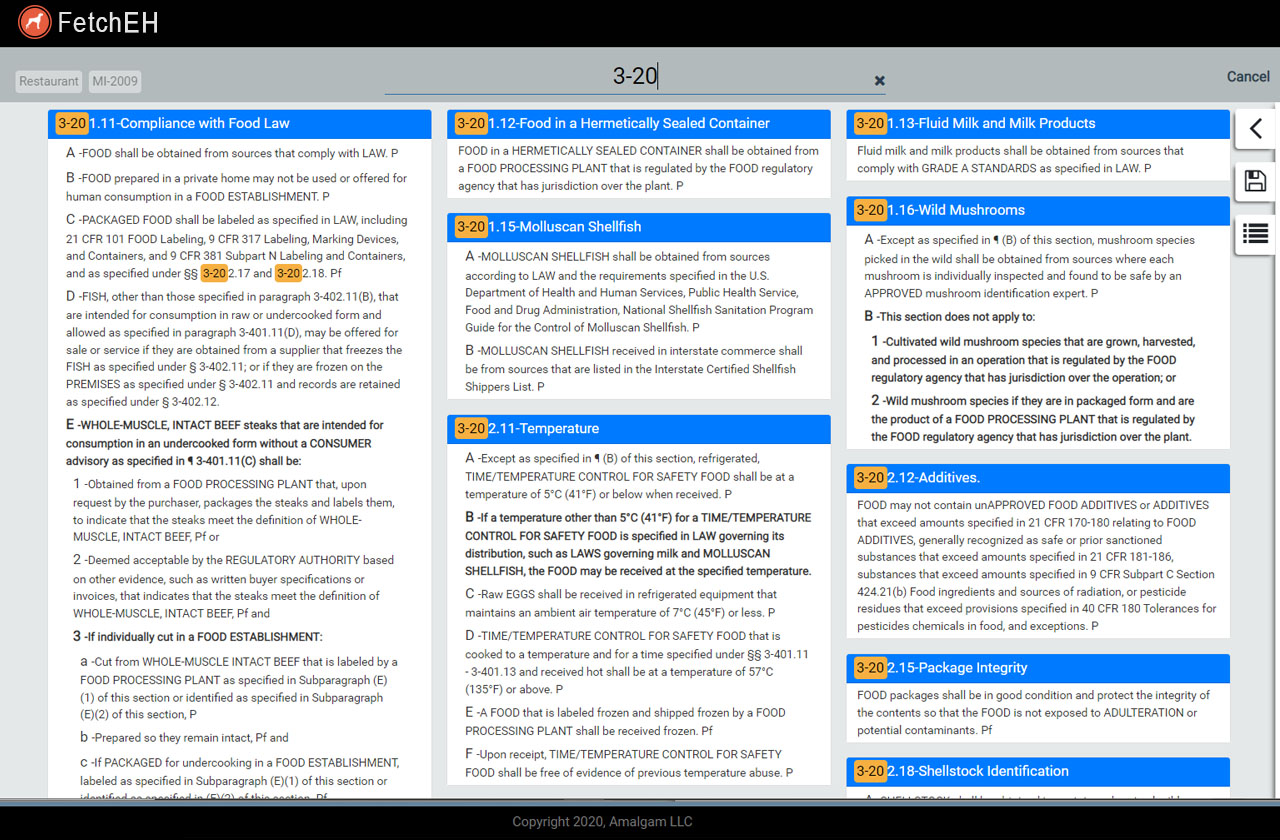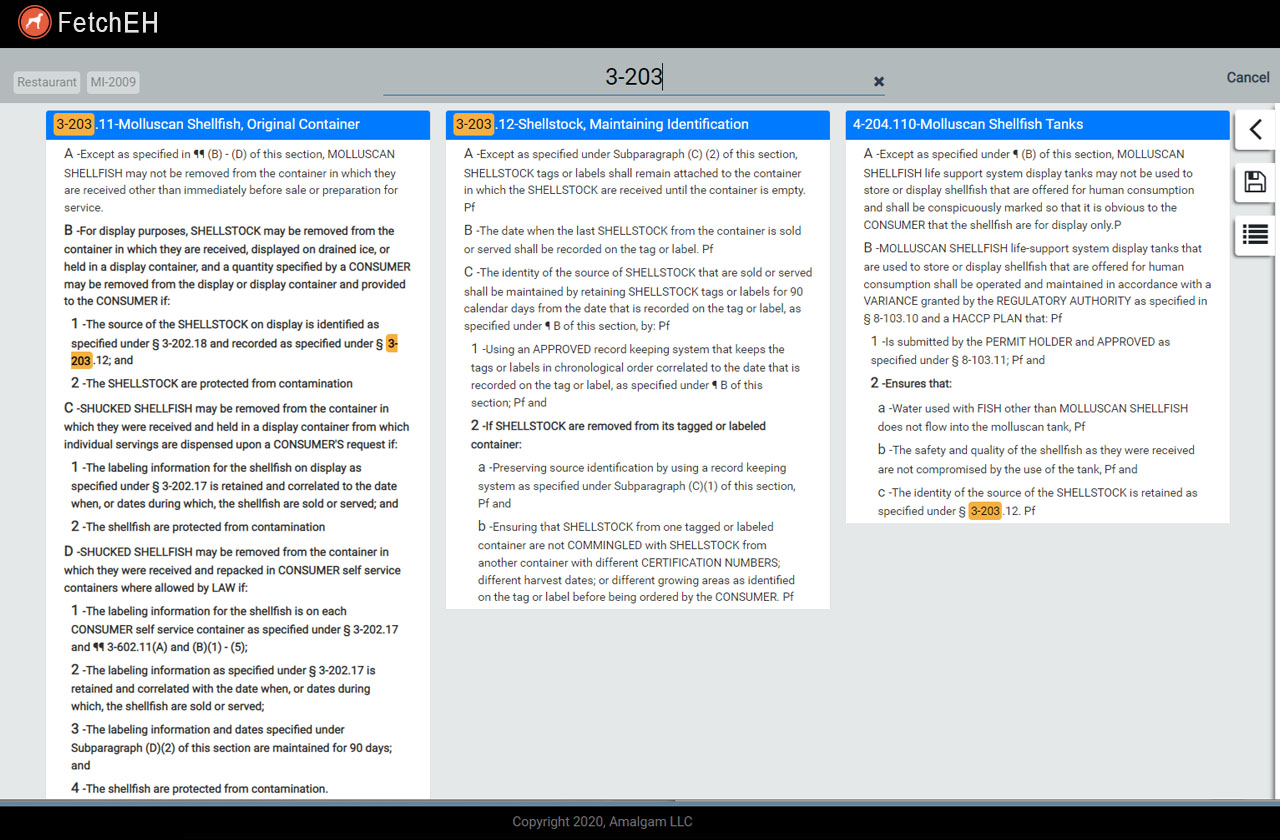EH Bellman
Location, data and EH. A better way forward.
EH Bellman - November.3.2022
Citing Food Violations
While citing food violations is a routine part of food inspections, there are different ways that health departments, or even inspectors, cite and manage violations. Differences can include citing the violation itself, but also tracking related information such as follow up requirements, recuring/repeat counts, observation and correction text and more. To meet these needs, we developed violation workflows that are flexible and focused on improving data quality. In this article, we will focus on two different approaches to citing violations in FetchEH.
Food Establishment Inspection Report
The first approach to citing violations involves an inspector using the FDA or State version of the Food Establishment Inspection Report. The Report contains questions that are marked as Compliant, Not Compliant, Not Observed or Not Applicable. Inspectors work through all questions in whatever order they want until the inspection is completed.
To replicate the Food Establishment Inspection Report questions in FetchEH, we created a digital code library that houses all of the food code and food law violations in a database. The code library also contains what question on the Food Establishment Inspection Report a particular violation is linked to. So, when an inspector marks a question Not Compliant, they will only see violations that are linked to that question – they will know exactly what violations can be cited.

Question Marked Compliant

Question Marked Non Compliant and Cited Violation
Once a violation is cited using the questions, it is added to the inspection where the inspector tracks violation specific information, like if the violation was corrected onsite, observations, corrective actions and more. Linking violations to their corresponding question improves data quality and inspections by presenting only those violations that are relevant for each question.
Using Search to Cite Violations
The second approach to citing violations involves an inspector searching for a violation. Because the code library is managed in a database in FetchEH, we are able to offer multiple search options. Inspectors can search for a keyword, which by default is structured to find matches that contain the search phrase. For example, searching for ice will return violations that contain any form of the word ice, such as jaundice, service, device and of course ice.

Search Contains Phrase Ice
Keyword searches can also be structured to find matches that have the exact match to the search phrase. In this example, searching for “ice” will only result in violations being displayed with the exact phrase “ice”, rather than showing results like jaundice, service and device.

Search Exact Match
Inspectors can also enter a partial search and as additional characters are added to the search phrase, the violation list is automatically updated with the corresponding matches. The partial search is displayed below using the violation number or partial number, which offers additional flexibility for inspectors that rely of violation numbers rather than keywords.

Partial Violation Number Search

Refined Violation Number Search
Citing violations is a common practice for inspectors, who often have different preferences or approaches to adding violations to an inspection. Integrating a digital violation library in FetchEH provides two main approaches to citing violations, including using questions on Food Establishment Inspection Report or leveraging flexible search options to find the appropriate violation. In the next post we will continue to follow the inspection process to explore how violation tracking is managed.
More Posts